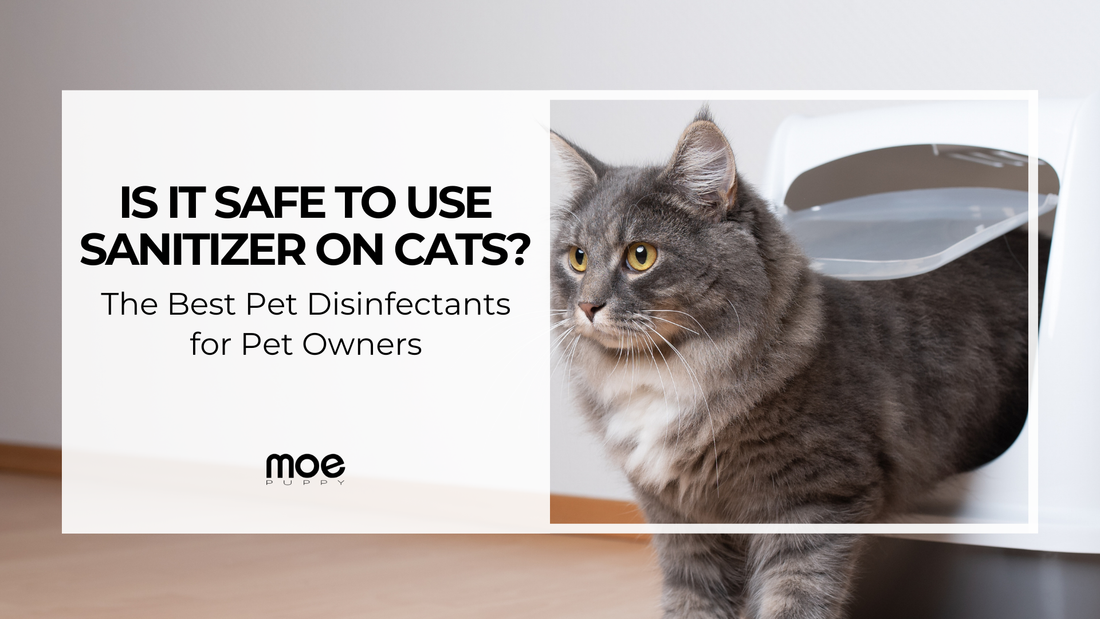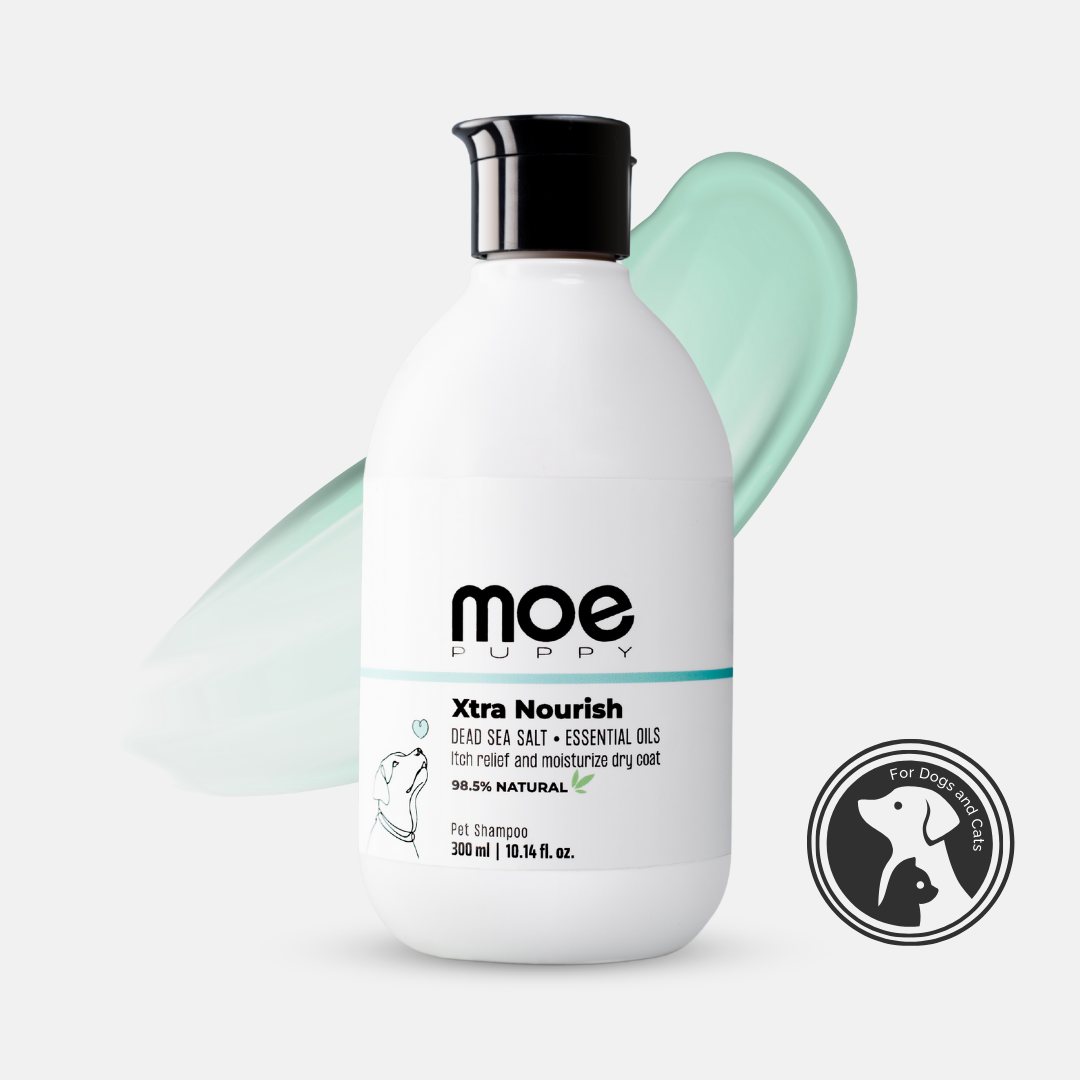
Is It Safe to Use Sanitizer on Cats? The Best Pet Disinfectants for Pet Owners
Share
Cats are naturally curious creatures, always exploring their surroundings, often licking, sniffing, and rubbing against various surfaces. As a responsible pet parent, it is natural to worry about keeping their environment clean and germ-free. In today's world, where sanitization has become a part of our daily lives, many pet owners find themselves wondering—Is it safe to use hand sanitizer or regular disinfectant sprays on cats or their belongings?
In this detailed article, we’ll dive into why using human sanitizers on cats is not recommended, what are the actual risks associated with it, how germs can still linger on pet areas even after routine cleaning, and finally how you can safely sanitize your pet’s belongings and spaces without compromising their health.
Why You Should Never Use Human Sanitizers or Disinfectants on Cats
The Composition of Human Sanitizers Is Not Pet-Friendly
Hand sanitizers, especially those formulated for humans, often contain high levels of ethyl alcohol (ethanol) or isopropyl alcohol, substances that are effective in killing viruses and bacteria on human hands. However, these ingredients are highly toxic to cats if ingested, inhaled, or absorbed through their skin.
Cats have a habit of licking themselves as part of their grooming routine. If you use any kind of sanitizer or disinfectant on their fur, paws, or areas they commonly contact, the risk of them ingesting harmful chemicals becomes alarmingly high.
Toxic Reactions and Health Hazards
According to multiple veterinary health advisories and organizations like ASPCA (American Society for the Prevention of Cruelty to Animals), alcohol ingestion or skin contact can cause the following symptoms in cats:
-
Drooling and vomiting
-
Disorientation and lethargy
-
Low body temperature (hypothermia)
-
Breathing difficulties
-
Seizures in severe cases
Fragrances, Dyes, and Other Harmful Additives
Most human-grade sanitizers and disinfectants are loaded with fragrances, dyes, and other chemicals that can irritate your cat’s sensitive skin and respiratory system. Even aerosol sprays, while not directly applied to your pet, can leave behind harmful residues on surfaces, causing indirect exposure.

Why Routine Cleaning Might Not Be Enough in Pet Areas
Understanding Pet Environments: A Hidden Germ Haven
Many pet owners clean their homes and pet belongings regularly. However, the challenge with pet areas is that they are frequently exposed to saliva, fur, dander, urine, feces, and other organic materials. These environments can still harbor bacteria, viruses, fungi, and parasites despite daily cleaning.
Here are some common areas where germs linger despite surface cleaning:
-
Litter boxes and surrounding floors
-
Food and water bowls
-
Pet toys (both plastic and fabric)
-
Pet beds, blankets, and cushions
-
Kennels, crates, and carriers
-
Doorways, mats, and areas where pets often lounge
Why Regular Soap and Water Can Fall Short
While soap and water are excellent at removing dirt and some bacteria, they are not always effective in killing all pathogens—especially in high-contact or high-risk areas. Residual germs like Salmonella, E.coli, Staphylococcus, and certain viruses can survive even after cleaning, posing a risk to both pets and humans.
Additionally, pet toys, fabric items, or areas like crates and carriers can trap bacteria deep within materials, which routine cleaning might not reach effectively.
Cross-Contamination Risks in Multi-Pet or Multi-Surface Homes
In households with multiple pets or children, the risk of cross-contamination increases. Pets might transfer germs from outdoors to indoor areas, and vice versa. Even if you clean regularly, areas such as paws, bedding, and frequently used spots might still harbor bacteria and viruses that can cause illness.
Safe Instant Sanitization for Pet Areas: The Role of Pet-Safe Disinfectant Sprays
Introducing Pet-Safe Disinfectants: The Game Changer for Pet Households
Given the limitations of routine cleaning and the dangers of using human-grade disinfectants, pet-safe disinfectant sprays have emerged as the ideal solution for pet owners. These sprays are specially formulated to be effective against germs while being safe if pets come into contact with treated surfaces.
How Do Pet-Safe Disinfectant Sprays Work?
Most pet-safe disinfectant sprays are free from alcohol, bleach, or phenol. Instead, they use safe, pet-friendly active ingredients such as:
-
Quaternary Ammonium Compounds (QUATs)
-
Benzalkonium Chloride (at pet-safe concentrations)
-
Natural antimicrobial agents
These formulas are designed to be non-toxic, non-irritating, and residue-free—making them ideal for use around cats, dogs, and other animals.
Instant Action and Convenience
One of the key advantages of using these pet disinfectant sprays is their quick action time. Typically, these sprays require just 5 seconds to work after application, offering a convenient and effective way to sanitize areas such as:
-
Litter trays
-
Food and water bowls
-
Kennels and crates
-
Pet toys and grooming equipment
-
Cat trees, perches, and play areas
After spraying, many of these products allow the area to be left to air dry naturally, minimizing disruption to your pet’s routine.

Best Practices to Sanitize Your Pet's Environment Safely
1. Remove Visible Dirt First
Disinfectants are most effective on clean surfaces. Always start by removing visible dirt, fur, or waste using pet-friendly cleaning agents or soap and water.
2. Use Pet-Safe Disinfectant Sprays for Final Sanitization
Apply pet-safe disinfectant sprays to high-contact areas, especially after cleaning litter boxes, toys, or bowls.
3. Let It Sit and Air Dry
For maximum efficacy, let the disinfectant sit on the surface for the time mentioned on the label (often as quick as 5-30 seconds). Then, either wipe it down or let it air dry completely before allowing your pet to access the area.
4. Incorporate Regular Disinfection Into Your Routine
Set a schedule to disinfect your pet’s environment—daily for food bowls and litter boxes, weekly for toys and bedding, and as needed for crates and travel gear.
Common Mistakes to Avoid When Sanitizing Around Cats
-
Avoid using bleach directly or products with high concentrations of alcohol.
-
Never spray sanitizers directly on your cat’s fur or paws.
-
Do not mix cleaning products, as this can create harmful fumes.
-
Ensure proper ventilation when cleaning any area.
-
Always read product labels carefully, ensuring they state "pet-safe" or "veterinary-grade disinfectant."
Conclusion: Pet Safety Comes First When Choosing Disinfectants
In conclusion, while it is crucial to keep your cat’s environment clean, using human-grade sanitizers or disinfectants can do more harm than good. Cats are sensitive creatures, and exposure to harsh chemicals can pose serious health risks.
Given the limitations of routine cleaning and the hidden germs that still linger on pet belongings, using a pet-safe disinfectant spray is the safest and most effective way to instantly sanitize your cat's environment without endangering their health.
These sprays are specially designed keeping pet behaviors in mind and offer quick germ elimination in as little as 5 seconds—making them a must-have for every responsible pet owner who wants to maintain a clean yet safe environment for their furry friends.

